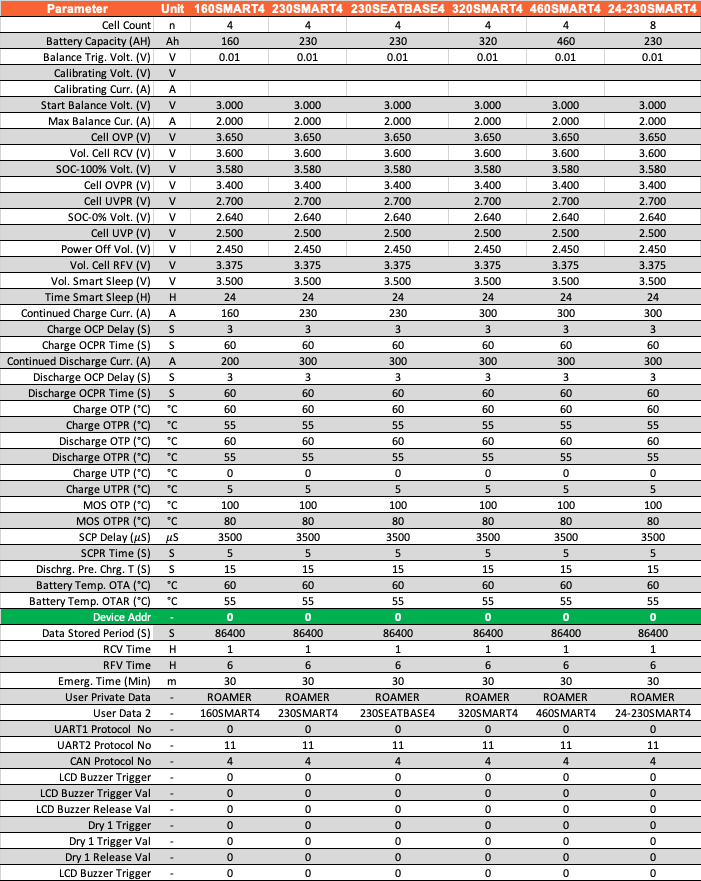Roamer SMART App - BMS defaults
The settings in the Roamer SMART4 BMS are vast, and give way to a range of modifications for all eventualities. Here we show the default settings and the rationale for some of the specific values.
IMPORTANT!
BMS parameters should not be changed unless under the instruction of Roamer.
Your warranty may be invalidated as a result of misuse or misconfiguration of these parameters as it presents an opportunity for damage to the battery.
BMS Parameters:
Please use the table below to reset your parameters to the defaults if you accidentally change anything.
What do they mean?
We won't go through all of them, but the parameters are intended to be for the best operation and lifespan of the battery.
Some of the more unusual parameters are explained below:
Vol. Cell RCV - This is the requested charge voltage (per cell). This is what the battery requests (multiplied by the number of cells) to the charging system when connected via CANbus.
Vol. Cell RFV - This is the requested float voltage (per cell). This is what the battery requests (multiplied by the number of cells) to the charging system during float, when connected via CANbus.
SCP Delay - This is the time delay from sensing a short circuit, to enabling the short circuit protection - set to 3500, this means that the battery will disconnect form a suspected short circuit in 3.5 microseconds!
Dischrg. Pre. Chrg. T - This is the pre-charge timer, we set this to 15 seconds to cover pre-charging even the largest of inverters that can be safely connected to a Roamer battery.
Device Addr - Device Address, usually set to 0. This is the CANbus address; so if you have multiple batteries, they all know who's who when they're talking together. If we left all of them at 0, its like everyone is talking at the same time, versus with correctly set addresses, they take turns talking and communication is clear.
If you'd like to know more about a specific parameter, please contact us on support@roamer.com. We're always on hand to help.

